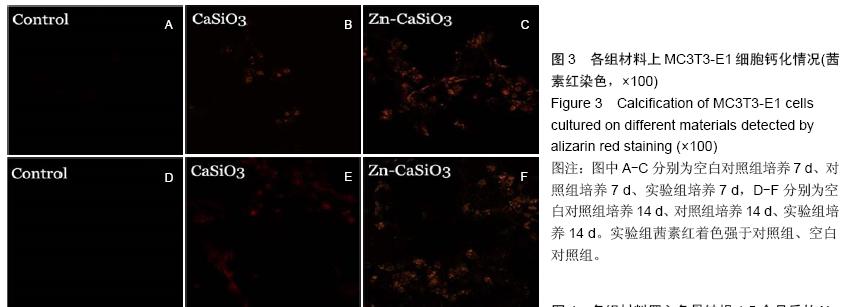| [1] Otten VT, Crnalic S, Röhrl SM,et al.Stability of Uncemented Cups-Long-Term Effect of Screws, Pegs and HA Coating: A 14-Year RSA Follow-Up of Total Hip Arthroplasty.J Arthroplasty. 2016;31(1):156-611. [2] Wang X, Zhou Y, Xia L,et al.Fabrication of nano-structured calcium silicate coatings with enhanced stability, bioactivity and osteogenic and angiogenic activity.Colloids Surf B Biointerfaces. 2015;126:358-366. [3] 郑学斌,季珩,黄静琪,等.离子弧喷涂生物医用涂层[J].机械工人,2005,56(9):27-29.[4] Xue W,Liu X,Zheng X,et al.In vivo evaluation of plasma-sprayed wollastonite coating.Biomaterials. 2005;26(17):3455-3460.[5] Wu C,Ramaswamy Y,Soeparto A,et al.Incorporation of titanium into calcium silicate improved their chemical stability and biological properties.J Biomed Mater Res A.2008;86(2):402-410.[6] Li K,Yu J,Xie Y,et al.Chemical stability and antimicrobial activity of plasma sprayed bioactive Ca2ZnSi2O7 coating.J Mater Sci Mater Med.2011; 22(12):2781-2789. [7] Wu C.Methods of improving mechanical and biomedical properties of Ca-Si-based ceramics and scaffolds.Expert Rev Med Devices. 2009;6(3):237-241. [8] Luo X,Barbieri D,Davison N,et al.Zinc in calcium phosphate mediates bone induction: in vitro and in vivo model.Acta Biomater.2014;10(1):477-485.[9] Jin G,Qin H,Cao H,et al.Synergistic effects of dual Zn/Ag ion implantation in osteogenic activity and antibacterial ability of titanium.Biomaterials. 2014; 35(27):7699-7713.[10] Lee S,Lee DS,Choi I,et al.Design of an osteoinductive extracellular fibronectin matrix protein for bone tissue engineering.Int J Mol Sci.2015;16(4):7672-7681.[11] Lynch MP,Stein JL,Stein GS,et al.The influence of type I collagen on the development and maintenance of the osteoblast phenotype in primary and passaged rat calvarial osteoblasts: modification of expression of genes supporting cell growth, adhesion, and extracellular matrix mineralization.Exp Cell Res.1995; 216(1):35-45.[12] Schäfer G,Hitchcock JK,Shaw TM,et al.A novel role of annexin A2 in human type I collagen gene expression.J Cell Biochem.2015;116(3):408-417.[13] Bonsignore LA,Goldberg VM,Greenfield EM.Machine oil inhibits the osseointegration of orthopaedic implants by impairing osteoblast attachment and spreading.J Orthop Res. 2015;33(7):979-987.[14] Rokusek D,Davitt C,Bandyopadhyay A,et al.Interaction of human osteoblasts with bioinert and bioactive ceramic substrates.J Biomed Mater Res A.2005;75(3): 588-594.[15] Reyes CD,Petrie TA,Burns KL,et al.Biomolecular surface coating to enhance orthopaedic tissue healing and integration.Biomaterials.2007;28(21):3228-3235.[16] Wei G,Ma PX.Structure and properties of nano-hydroxyapatite/polymer composite scaffolds for bone tissue engineering.Biomaterials.2004;25(19): 4749-4757.[17] Zhang Q,Dong H,Li Y,et al.Microgrooved Polymer Substrates Promote Collective Cell Migration To Accelerate Fracture Healing in an in Vitro Model.ACS Appl Mater Interfaces. 2015;7(41):23336-23345.[18] Liang Y,Xu J,Chen J,et al.Zinc ion implantation?deposition technique improves the osteoblast biocompatibility of titanium surfaces.Mol Med Rep. 2015; 11(6):4225-4231. [19] Shen X,Hu Y,Xu G,et al.Regulation of the biological functions of osteoblasts and bone formation by Zn-incorporated coating on microrough titanium.ACS Appl Mater Interfaces.2014;6(18):16426-16440.[20] Ehara A,Ogata K,Imazato S,et al.Effects of alpha-TCP and TetCP on MC3T3-E1 proliferation, differentiation and mineralization.Biomaterials. 2003;24(5):831-836.[21] Li B,Liu H,Jia S.Zinc enhances bone metabolism in ovariectomized rats and exerts anabolic osteoblastic/ adipocytic marrow effects ex vivo.Biol Trace Elem Res. 2015;163(1-2):202-207.[22] Vahabzadeh S,Bandyopadhyay A,Bose S,et al.IGF-loaded silicon and zinc doped brushite cement: physico-mechanical characterization and in vivo osteogenesis evaluation.Integr Biol (Camb).2015;7(12): 1561-1573 .[23] Wang H,Zhao S,Xiao W,et al.Three-dimensional zinc incorporated borosilicate bioactive glass scaffolds for rodent critical-sized calvarial defects repair and regeneration.Colloids Surf B Biointerfaces.2015;130: 149-156. |
.jpg)




